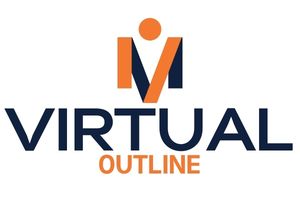Unlocking Value: The Role of Collateralized Loans in Modern Finance
In today’s dynamic financial landscape, Collateralized loans have emerged as a pivotal tool for individuals and businesses seeking to leverage their assets to secure financing. This article delves into the significance of collateralized loans, their benefits, strategic considerations, and their integral role in unlocking value and facilitating financial growth.
Understanding Collateralized Loans
Collateralized loans, also known as secured loans, involve borrowers offering valuable assets as collateral to lenders in exchange for funding. These assets can range from real estate properties and vehicles to investment portfolios and digital assets like cryptocurrencies. The collateral serves as a form of security for lenders, reducing their risk and enabling borrowers to access larger loan amounts or more favorable terms compared to unsecured loans.
Key Benefits of Collateralized Loans
- Enhanced Borrowing Capacity: By pledging valuable assets as collateral, borrowers can significantly increase their borrowing capacity. This allows individuals and businesses to secure financing for various purposes, including business expansions, debt consolidation, home improvements, or personal investments, without depleting their liquid assets.
- Lower Interest Rates: Collateralized loans often come with lower interest rates than unsecured loans due to the reduced risk for lenders. The presence of collateral provides lenders with assurance of repayment, leading to more competitive borrowing terms and potentially lower overall borrowing costs for borrowers.
- Flexible Repayment Options: Secured loans typically offer flexible repayment terms tailored to borrowers’ financial capabilities and cash flow. This flexibility enables borrowers to manage repayment schedules effectively, minimizing financial strain and optimizing financial planning strategies.
Strategic Considerations for Borrowers
- Asset Evaluation and Eligibility: The value and type of collateral pledged significantly influence the loan amount and terms offered by lenders. It is crucial for borrowers to conduct thorough asset evaluations and assessments to determine eligibility and ensure sufficient collateral coverage relative to the desired loan amount.
- Risk Management Strategies: While collateralized loans mitigate lender risk through asset backing, borrowers must implement robust risk management strategies. Monitoring market conditions, maintaining conservative loan-to-value (LTV) ratios, and diversifying collateral holdings are essential to mitigate risks associated with asset volatility and ensure financial stability throughout the loan term.
- Selecting a Reliable Lender: Choosing a reputable lender with transparent terms, competitive rates, and reliable customer support is paramount for borrowers seeking collateralized loans. Conducting due diligence, comparing multiple lenders, and reviewing borrower feedback help ensure trustworthiness and satisfaction throughout the loan application and repayment process.
Challenges and Considerations
- Market Dynamics and Asset Liquidity: Fluctuations in asset valuations and market conditions can impact collateralized assets’ value and loan terms. Borrowers should stay informed about market trends, maintain diversified collateral holdings, and plan for potential liquidity constraints to mitigate risks and ensure financial resilience.
- Regulatory Compliance: Regulatory requirements governing collateralized loans vary by jurisdiction and asset type, influencing contract terms, borrower protections, and legal responsibilities. Adhering to regulatory guidelines and seeking legal advice ensure compliance, transparency, and mitigate potential legal risks throughout the loan agreement.
- Security and Custody: Entrusting valuable assets to lenders necessitates robust security measures and transparent custody solutions to safeguard against cybersecurity threats, fraud, or operational vulnerabilities. Choosing lenders with secure storage facilities, comprehensive insurance coverage, and adherence to industry best practices enhances asset protection and reinforces trust in collateralized loan agreements.
Conclusion
Collateralized loans play a crucial role in modern finance by enabling individuals and businesses to unlock the value of their assets and access capital for growth and financial stability. By understanding the benefits, strategic considerations, challenges, and regulatory implications associated with collateralized loans, borrowers can make informed decisions, optimize financial strategies, and achieve their long-term financial goals with confidence.







